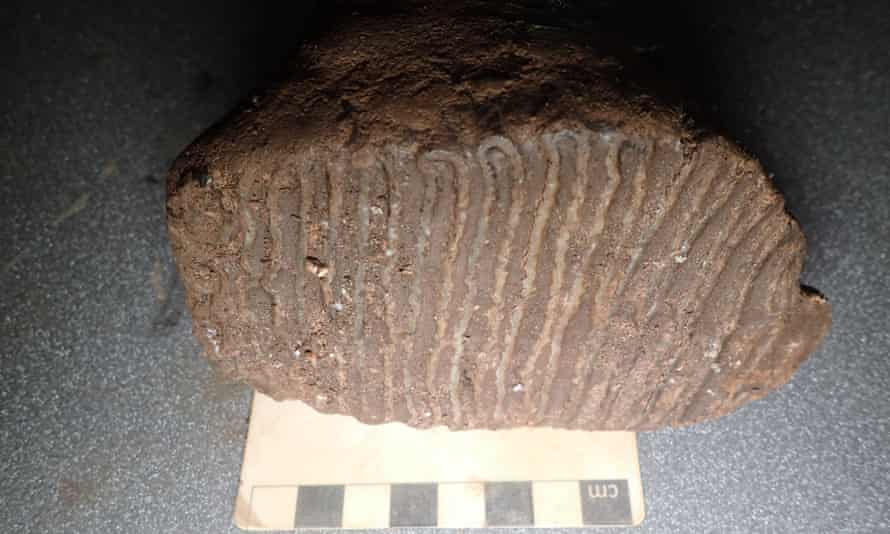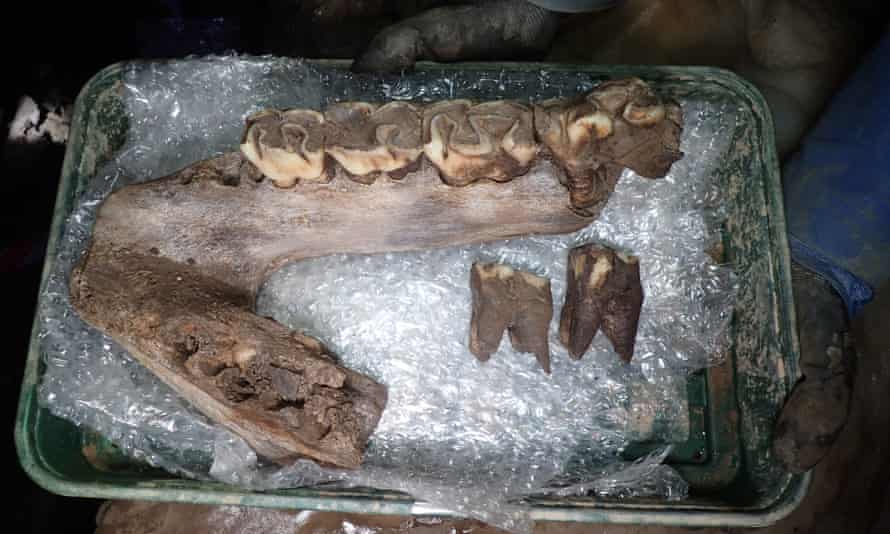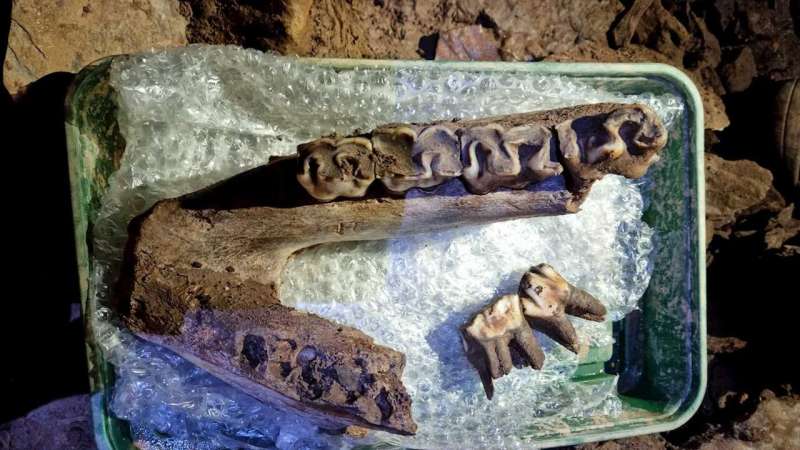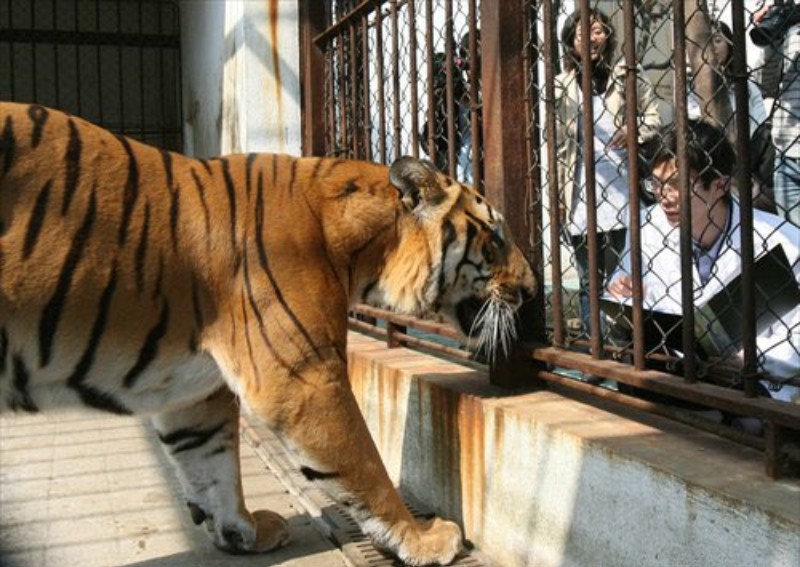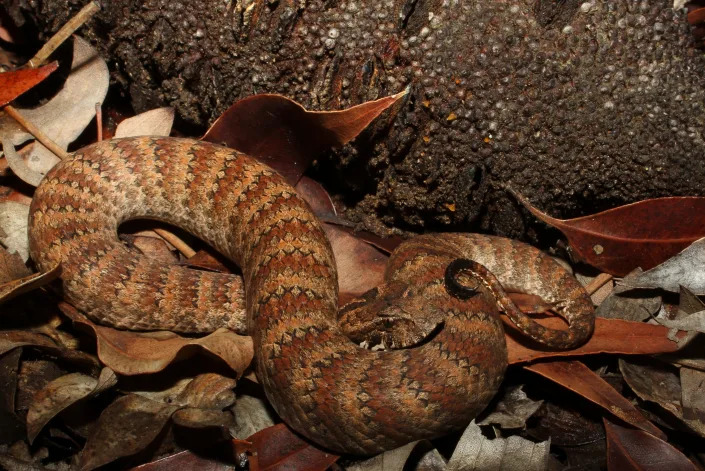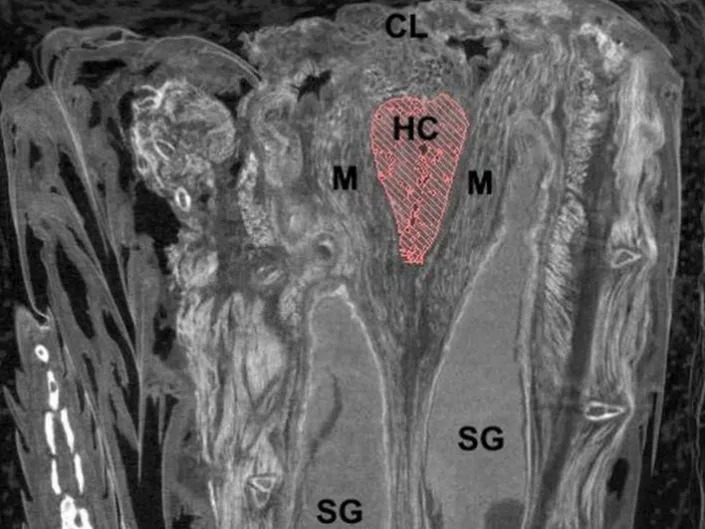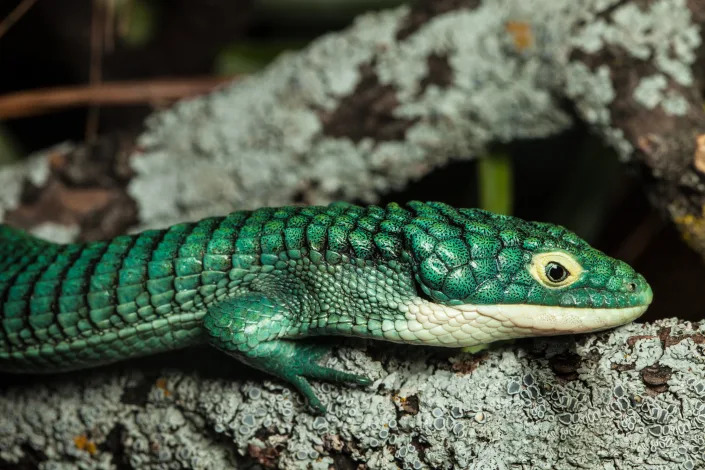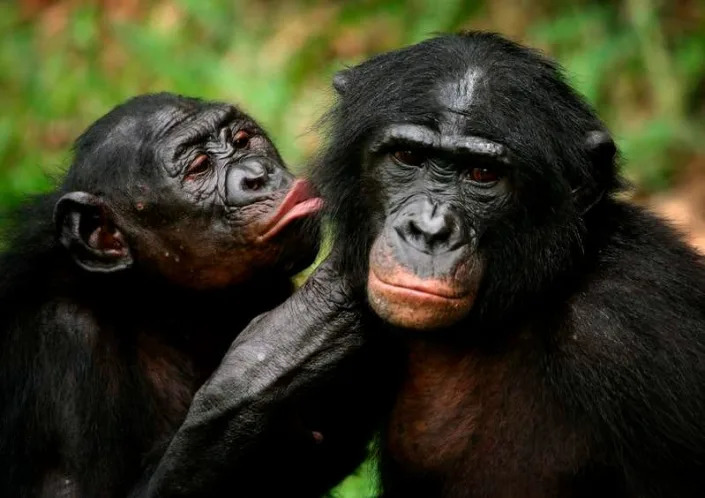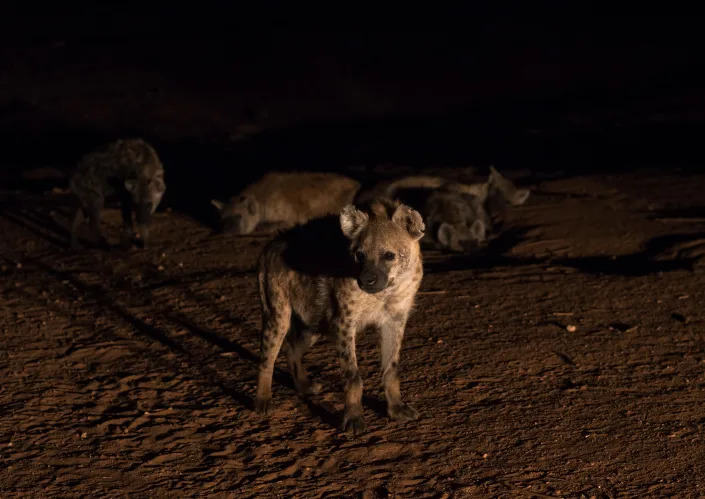Small birds spice up the already diverse diet of spotted hyenas in Namibia
IMAGE:
SPOTTED HYENA HUNTING BIRDS AT A WATERHOLE IN NAMIBIA
view moreCREDIT: PHOTO BY MIHA KROFEL
Hyenas are generalist predators (and scavengers) with a broad range of prey species. They are known for hunting (or scavenging) larger mammals such as antelopes and occasionally feed on smaller mammals and reptiles. Being flexible in the choice of prey is a strategy of generalists – and this even extends to small passerine birds, as scientists from the Leibniz Institute for Zoo and Wildlife Research (Leibniz-IZW) and the University of Ljubljana observed in Namibia: Spotted hyenas pursued red-billed queleas, picked them from the ground or the surface of a waterhole and swallowed them whole, at a success rate of approximately one bird every three minutes. These observations were described for the first time in word, photos and videos in the scientific journal “Food Webs”.
The diet breadth of hyenas is matched by few other carnivores. Spotted hyenas (Crocuta crocuta) are known to hunt a variety of larger mammals such as zebras and antelopes in southern and eastern Africa – but also ostriches, flamingos, reptiles, other carnivores. They also scavenge on carcasses from giraffes to elephants and cattle. Until now very few observations of hyenas feeding on small birds were reported. “In our paper we describe for the first time the hunting and feeding behaviour of spotted hyenas on red-billed queleas (Quelea quelea), a passerine bird known for its huge flocks, at a waterhole in the Etosha National Park in Namibia”, say Rubén Portas and Dr. Miha Krofel, scientists working for the Leibniz-IZW and the University of Ljubljana. On two different days they observed, filmed and photographed spotted hyenas chasing flying birds or picking them from the ground or the water surface, and devouring them whole at the waterhole. “We observed that a single hyena can catch on average one bird every three minutes”, the scientists conclude from their observations.
The scientists could draw some conclusions about the feeding behaviour of spotted hyenas from their observations. “It adds to the known variety of the spotted hyena diet and hunting tactics, since this behaviour has not been documented before”, says Portas. “It confirms their flexibility and ability to exploit foraging opportunities and obtaining food from unusual sources. We can also provide a first estimate on the capture rates and the food intake of hyenas hunting passerine birds.” As the observations were limited to a single waterhole, it is possible that the described foraging tactic was specific to the hyenas from the observed clan and occurred as an opportunistic response to an abundant food source, the authors say. Between May and August, thousands of wintering red-billed queleas gather at waterholes in Namibia.
Portas and Krofel regularly carry out field research on vultures, lions, leopards and hyenas and investigate carnivore-scavenger interactions and information transfer in the scavenger community for the GAIA Initiative and InterMuc projects in Etosha National Park. The GAIA Initiative is an alliance of research institutes, conservation organisations and companies with the aim of creating a high-tech early warning system for environmental changes. In several projects, the GAIA partners conduct wildlife research on selected species, their interaction and the functioning of ecosystems they inhabit. On this basis, the GAIA scientists and engineers build and utilize high-tech interfaces to the senses and intelligence of sentinel animals in order to detect critical changes or incidents in ecosystems fast and effectively. To this end, they develop a new generation of animal tags equipped with on-board artificial intelligence (AI), a camera, energy-efficient electronics and satellite-based communication technology.
JOURNAL
Food Webs
METHOD OF RESEARCH
Observational study
SUBJECT OF RESEARCH
Animals
ARTICLE TITLE
Spotted hyena (Crocuta crocuta) predation on passerine birds in Namibia
When inequality is more than “skin-deep”: Social status leaves traces in the epigenome of spotted hyenas in Tanzania
IMAGE:
SPOTTED HYENAS RESTING AT THE COMMUNAL DEN IN THE SERENGETI NATIONAL PARK IN TANZANIA (PHOTO BY SARAH BENHAIEM/LEIBNIZ-IZW)
view moreCREDIT: PHOTO BY SARAH BENHAIEM/LEIBNIZ-IZW
A research consortium led by scientists from the Leibniz Institute for Zoo and Wildlife Research (Leibniz-IZW) provide evidence that social behaviour and social status are reflected at the molecular level of gene activation (epigenome) in juvenile and adult free-ranging spotted hyenas. They analysed non-invasively collected gut epithelium samples from both high-ranking and low-ranking female hyenas and showed that rank differences were associated with epigenetic signatures of social inequality, i.e., the pattern of activation or switching off of genes that regulate important physiological processes such as energy conversion and immune response in several genome regions. The results, published in the scientific journal Communications Biology, contribute to a better understanding of the role of epigenetic mechanisms in the interplay of social, environmental and physiological factors in the life of a highly social mammal.
In mammals, social behaviour and social status can substantially influence the survival, reproductive performance and health of individuals. However, it is not yet fully understood how the translation of social and environmental factors into the physiology of an organism is reflected in molecular processes. Now, scientists from the Leibniz-IZW Department of Evolutionary Genetics and the Serengeti Hyena Project at the Leibniz-IZW’s Department of Ecological Dynamics found that social status influenced epigenetic patterns, more specifically the methylation of DNA in both young and adult female spotted hyenas (Crocuta crocuta) which determines the activation of genes. They analysed DNA from gut epithelium cells from 18 adult female hyenas and 24 cubs with known social status from three clans in the Serengeti National Park, Tanzania. The scientists identified and validated 149 genome regions, where high-ranking and low-ranking individuals differed in the methylation of DNA (differentially methylated regions, DMRs). “We could, for the first time, provide evidence for epigenetic signatures of social inequalities in both young and adult spotted hyenas”, says Dr Alexandra Weyrich, head of the working group “Wildlife Epigenetics” in the Leibniz-IZW Department of Evolutionary Genetics and senior author of the paper.
The findings show that these epigenetic signatures are stable across life stages – and that they are linked to important physiological processes: Many of the identified DMRs were involved in the regulation of energy conversion, immune response, glutamate receptor signalling and ion transportation. “Especially the large number of DMRs in genes involved in energy conversion caught our eye”, says first author Colin Vullioud, data scientist in Weyrich’s working group. Co-author Dr Sarah Benhaiem, co-head of the Serengeti Hyena Project, explains: “We suspect that this may be driven by differences in behaviour and specifically the greater use of long-distance foraging trips by low-ranking than high-ranking females – the latter monopolising resources in their clan territory.” Interestingly, these genes were more methylated (or hypermethylated) in low-ranking adult females but not in cubs. This could indicate an adjustment of low-ranking adult females to higher energetic costs of frequent long-distance commuting, a behaviour not displayed by cubs. “Although the exact physiological consequences of the observed hypermethylation remain to be investigated, these findings are consistent with our observations and hint at the sought-after missing link between social and physiological factors”, Weyrich and Benhaiem conclude.
The analyses built on the expertise in epigenetics of the Leibniz-IZW as well as on the long-term research on spotted hyenas in the Serengeti, which started in 1987. The females in this investigation are individually known and their social status has been tracked for generations. This provided ideal conditions to study the links between behaviour, physiological factors, epigenetic modifications and fitness in terms of survival and reproduction in a wild population. “We collected our samples without invading the life of the hyenas”, say Dr Marion L. East and Professor Dr Heribert Hofer, founders of the Serengeti hyena project and co-authors of the paper. “We followed our study animals, collected super-fresh droppings immediately after they were produced and preserved gut epithelium samples from the surface of the faeces.” The use of samples collected in a non-invasive manner is one of the strengths of the investigation, the authors surmise. “The capture methylation method we used enriches methylated DNA as well as mammalian DNA, which improved the amount of hyena DNA over bacterial DNA and the quality of the sequencing data”, explains Weyrich.
DNA methylation is a chemical modification of the basic building blocks of a cell's genetic material. This modification is enabled by the transfer of methyl groups to nucleobases at certain positions in the DNA. As the basic structure of the respective nucleobase is unaltered, DNA methylation is not a genetic mutation, but a modification which determines whether this part of the DNA is ‘being used’ (activated) or switched off. DNA methylation is the most important epigenetic modification and thus a pivotal part of making genetic information available to the physiological processes within a cell.
Spotted hyenas are highly social and a model for social status-related differences in life history traits that are accompanied by differences in physiological processes and health. In hyena clans, females and their offspring socially dominate all immigrant males, and social status is behaviourally “inherited” by cubs from mothers who gain privileges associated with maternal social status. “As in some primate species, young hyenas receive social support from their mothers during interactions with group members. From these they learn that they can dominate all individuals which are submissive to their mother, but have to submit to those which their mother is submissive to”, explains East. Therefore, social status is stable and predictable because it is determined by family relationships and behavioural conventions.
“Additionally, the effects of social status on life history trajectories and health are typically passed across generations”, adds Hofer. For example, high-ranking females have priority access to resources in the clan territory and do not need to commute as much as low-ranking females to find food. They are therefore much more often present at the communal den and more frequently nurse their young. The milk-dependent cubs disproportionally benefit at this early stage in their life – by growing faster, having a higher chance of surviving to adulthood and starting reproduction at an earlier age than the offspring of low-ranking females.
JOURNAL
Communications Biology
METHOD OF RESEARCH
Data/statistical analysis
SUBJECT OF RESEARCH
Animals
ARTICLE TITLE
Epigenetic signatures of social status in female free-ranging spotted hyenas (Crocuta Crocuta)
ARTICLE PUBLICATION DATE
28-Mar-2024
LA REVUE GAUCHE - Left Comment: Search results for HYENA
![[shunka.jpg]](https://blogger.googleusercontent.com/img/b/R29vZ2xl/AVvXsEgMIDb__zwQ0Kw5MOjFF6nEXzzZ8-qm98S4eFUkLQRq2AST9c3B4rTtxQJKCN5NAN8vc6Cy0tLmRN3WU7BgjigTi_gSQVX1aQKMGSKNoRFLTvyJMceqWY2Bd1BcICcbWiD6n-03Ig/s1600/shunka.jpg)

